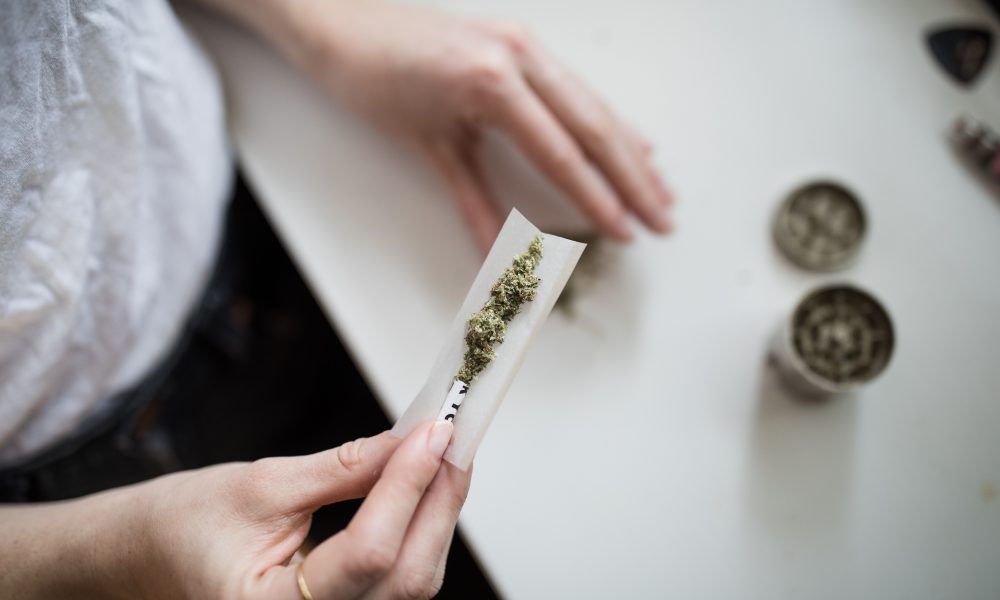A study of high school students in Massachusetts found that youth were no more likely to use marijuana after legalization, though more students perceived their parents as cannabis consumers after the policy change.
“No statistically significant differences were found in the prevalence of past-30 day cannabis use before and after legalization among adolescents,” says the report, published in the journal Clinical Therapeutics. The proportion of students who reported perceiving that a parent uses cannabis, however, rose from 18 percent to 24 percent after legalization.
“Adolescent perceptions of their parents as cannabis users increased after legalization,” the study says, “even before state-regulated retails [sic] sales began.”
The findings stem from the results of two waves of survey data collected from two eastern Massachusetts high schools in 2016 and 2018. The earlier survey took place before legalization, while the later one occurred after legalization went into effect but before retail sales began.
In 2016, 82 percent of respondents reported that their perception was that their parents did not use marijuana. By 2018, that number had fallen slightly, to 76 percent.
When it came to their perception of best friends’ cannabis use, students also reported a slight bump. In 2016, 31 percent of students said they perceived their best friend used marijuana, which climbed to 36 percent in 2018.
One main finding of the study was that the likelihood of marijuana use was significantly higher among adolescents who reported perceiving that a parent, sibling or best friend uses the drug.
“The strongest association with past 30-day use was perceived marijuana use among best friends,” the study says, followed by the perception that a sibling uses cannabis both medicinally and recreationally. Adolescents’ perceptions that a parent uses medical and/or adult-use marijuana was also associated with a higher likelihood of past 30-day use.
“It’s not news that youth are influenced by peers,” Faith English, a doctoral candidate at the University of Massachusetts Amherst’s School of Public Health and Health Sciences and the lead author of the new report, said in a UMass press release sent on Friday. “But our paper was really the first to look at these three particular roles within a person’s social network and then look at changes from pre- to post-legalization. It was really quite novel.”
The findings were published this summer in a special issue of Clinical Therapeutics that focused on core elements of cannabis legalization
“One of the million-dollar questions as cannabis policies are being implemented across the country is whether or not youth use increases after legalization,” English said.
Despite the slight rise in the perception of youth that family or friends use marijuana, however, the study found that past 30-day use among adolescents didn’t meaningfully increase. In general, it tracked with national numbers.
In 2016, 19 percent of surveyed females and 27 percent of males reported consuming cannabis within the past month, the study says. In 2018, those numbers were 20 percent and 28 percent, respectively.
English and co-author Jennifer Whitehill, a UMass professor of health policy and management, said that given the findings that a young person’s peers seem to impact their cannabis use, it makes sense to consider additional prevention and intervention strategies among youth who perceive their friends or family use marijuana.
Despite widespread concerns that legalization would lead to a massive increase in youth cannabis use, most available evidence suggests the impacts have been minimal and in some cases even reduced use by minors. A study of youth use in Canada published in September in the Journal of the American Medical Association (JAMA) Network Open, for example, found that young adults who used marijuana frequently before legalization “showed significant reductions in use and consequences” following the policy change.
While some infrequent marijuana users did increase their consumption after legalization, that study found, “such an increase did not lead to problematic outcomes during the study period.”
In the U.S., federally funded research published in August found that teen use of marijuana remained stable amid the legalization movement even as adult use of cannabis and psychedelics reached “historic highs.”
A recent Gallup poll, meanwhile, found that fully half of all American adults have tried marijuana at some point in their lives, with rates of active cannabis consumption surpassing that of tobacco. Broken down by age, 29 percent of those 18–34 say they currently smoke marijuana, though that’s not necessarily representative of overall cannabis use, because the survey only asked about smoking and not other modes of consumption such as edibles, vaping or tinctures.
A separate National Institute on Drug Abuse-funded study published in the American Journal of Preventive Medicine last year also found that state-level cannabis legalization is not associated with increased youth use. That study observed that “youth who spent more of their adolescence under legalization were no more or less likely to have used cannabis at age 15 years than adolescents who spent little or no time under legalization.”
Yet another federally funded study from Michigan State University that was published in the journal PLOS One last year found that “cannabis retail sales might be followed by the increased occurrence of cannabis onsets for older adults” in legal states, “but not for underage persons who cannot buy cannabis products in a retail outlet.”
Marijuana Consumers Who Caught COVID Had ‘Better Outcomes And Mortality’ Than Nonusers, Study Finds
Read the full article here

